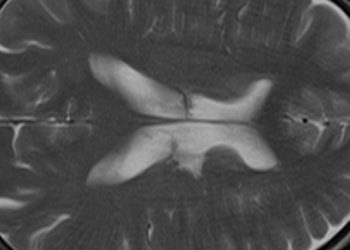[Physician Comment] More accurate diagnosis of fever of unknown origin could limit inappropriate antibiotic usage
Image: CC/GrahamColm
Study Author, Dr. Gregory Storch, M.D. , talks to 2 Minute Medicine
 Ruth L. Siteman Professor of Pediatrics
Ruth L. Siteman Professor of Pediatrics
Professor of Medicine and Professor of Molecular Microbiology
Director, Divisions of Pediatric Infectious Diseases and Pediatric Laboratory Medicine
Medical Director of Clinical Laboratories, St. Louis Children’s Hospital
Why the study is clinically important to physicians? Fever without a source is an important problem in pediatrics. In most cases, a specific diagnosis is not made. This study confirms that viruses are important causes and highlights the role of several specific viruses. This information could be used to help design rapid diagnostic tests.
Why the medical students should care about the study? This information provides a better understanding of the nature of the disease in children with fever without a focus. Future efforts at diagnosis, treatment, and prevention all require information based on confirmed diagnoses.
What are the future implications of the study? Most importantly, this study may help limit inappropriate use of antibiotics. About half of the patients in the study were treated with antibiotics, even though a virus was probably the cause of their illness. Better awareness of viral infections, probably supplemented by better diagnostic tests, could help limit unneeded antibiotic therapy.
Key study points:
1. Viral pathogens are more commonly detected in the blood and nasopharynx of children with fever of unknown origin (FUO) than in afebrile children or children with known bacterial infection. The most commonly identified viruses are adenovirus, human herpesvirus-6, enterovirus, and parechovirus.
2. Obtaining both blood samples and nasopharyngeal swabs for polymerase chain reaction (PCR) expand the number of viruses detected.
3. Antibiotics were used in 51% of children with no known evidence of a bacterial infection.
Primer: Children presenting to an emergency department with a fever of unknown origin (FUO), defined as greater than 38 °C, most likely have an illness of infectious etiology. In recent years, the widespread application of vaccines for Haemophilus influenzae type b (Hib) and Streptococcus pneumoniae (pneumococcus) has led to a drastic decrease in the number of cases of occult bacteremia. In children with FUO between 2 and 36 months of age, it is believed that serious bacterial infections now constitute the minority of cases (<1%), but the specific pathogens and exact prevalence of viral infection underlying persistent fever remains unknown. Understanding the contribution of viral etiology to FUO is vital to prevent inappropriate antibiotic usage.
Background reading:
1. Finkelstein JA, Christiansen CL, Platt R. Fever in pediatric primary care: occurrence, management, and outcomes. Pediatrics 2000; 105:260.
2. Wilkinson M, Bulloch B, Smith M. Prevalence of occult bacteremia in children aged 3 to 36 months presenting to the emergency department with fever in the postpneumococcal conjugate vaccine era. Acad Emerg Med 2009; 16:220.
This [case-control] study included children between ages 2 and 36 months presenting to the emergency or ambulatory surgery departments at St. Louis Children’s Hospital. The case group included children from the ED with temperature greater than or equal to 38 °C, but without a known source, who were having blood drawn as part of their clinical management. Children with underlying conditions predisposing them to infection were excluded from the study population. There were two comparison groups: age-matched children with fever and definite or probable bacterial infection, and age-matched afebrile children having outpatient surgery. Blood and nasopharyngeal samples were tested with virus-specific PCR assays.
Within the population of children with FUO, 76% had at least 1 virus detected. In the control populations, 40% of children with definite or probable bacterial infection and 35% of the afebrile group had at least 1 virus detected. The most commonly identified viruses included adenovirus, human herpesvirus-6, enterovirus and parechovirus.
Antibiotics were used in 51% of children with no known evidence of a bacterial infection.
In sum: Viral pathogens were identified by PCR with high frequency (76%) in children with FUO, much higher than compared to afebrile children or children with known bacterial illness. In just over half (51%) of the FUO group, antibiotics were inappropriately used. The smaller size of this study (206 patients total) and limited population selected from one hospital make the implications for other patient populations in the United States less clear, especially given the geographic variation in viral prevalence. A limitation of the study design is a selection bias as the inclusion criteria consisted of patients having blood samples obtained as part of their clinical management.
Identification of viral etiologies of FUO is crucial to enabling more appropriate utilization of antibiotics in these children.
Click to read the study in Pediatrics
By [SS] and [DB]
© 2012 2minutemedicine.com. All rights reserved. No works may be reproduced without written consent from 2minutemedicine.com. DISCLAIMER: Posts are not medical advice and are not intended as such. Please see a healthcare professional if you seek medical advice.





